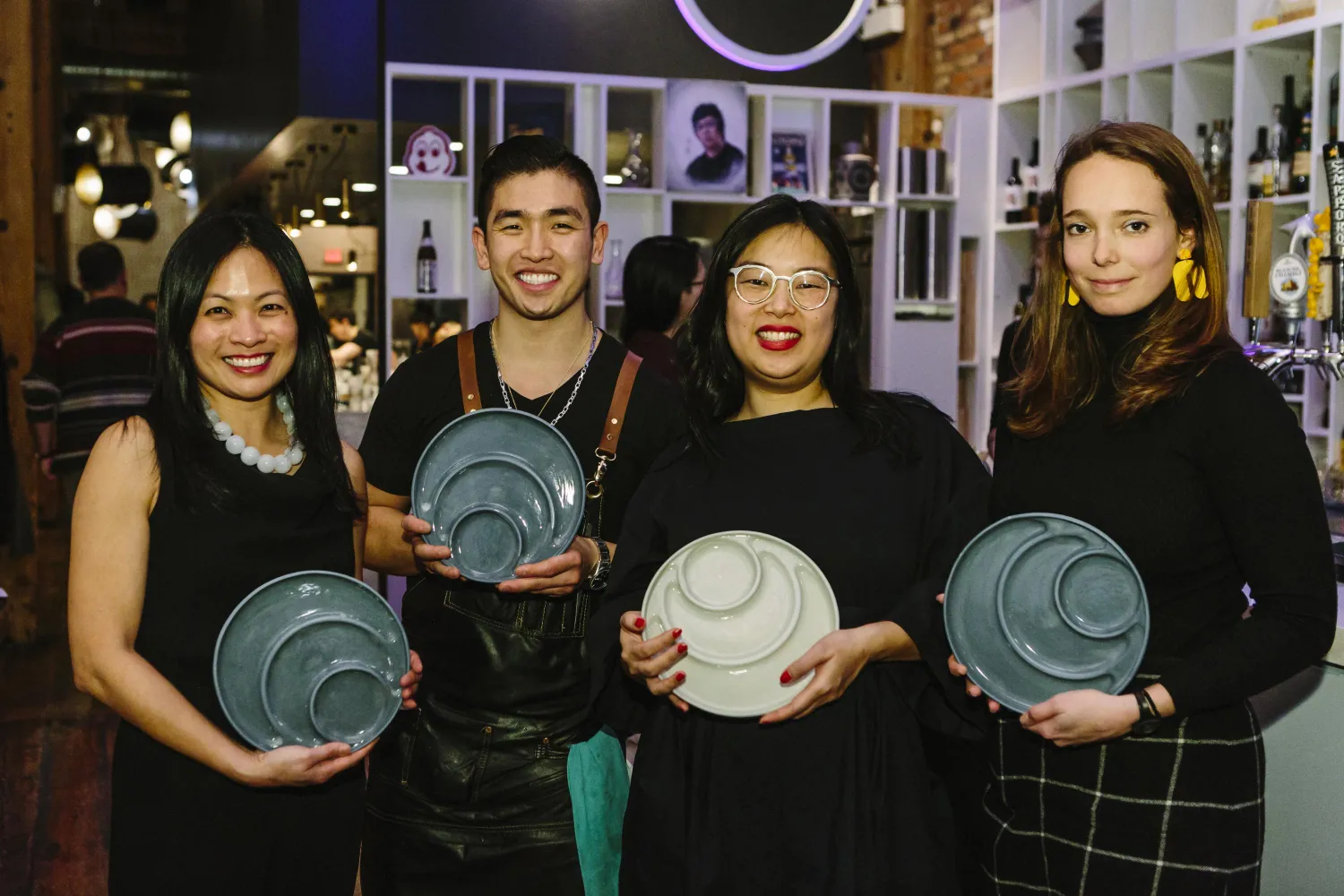Open Studio 2026 Printmaking Residency
The RBC Centre for Emerging Artists & Designers is excited to announce the Open Studio Printmaking Residency Career Launcher for OCAD U students.

L to R: Ranee Lee, Chef Eric Chong, Pratt Institute Assistant Professor Amanda Huynh, Charlotte Reiter.
What began as an academic research project for Associate Professor Ranee Lee has transformed into an international initiative, inspired by her desire to see better care for seniors, especially during mealtimes.
Lee joined with Amanda Huynh, Assistant Professor at the Pratt Institute to create One Lovely Hour, a dining experience involving a curated and crafted meal, presented on specially designed dishware, that promotes conversations about food, memory, aging and design.
One Lovely Hour, launched at the 2023 DesignTO Festival, saw both professors work with Chef Eric Chong, the first winner of MasterChef Canada, at his Toronto restaurant, R&D on a three-course meal centered on the sensory experience that can influence one’s identity and memory.
Over two seatings, 110 guests, including students, academics, designers, health care workers, personal support workers and members of the public attended the experience, which is inspired by better care for older adults in long term care homes, specifically around culture and connections during mealtimes.
The project received such a tremendous positive response, that it is now gaining international recognition. For example, One Lovely Hour travelled to the Dementia Lab Conference in Leuven, Belgium and the IDSA AAPI Exhibition for NYCxDESIGN in Brooklyn.
Next up, Lee and Huynh’s project will be featured at the Yee Hong Dragon Ball Fundraiser in Toronto on Feb. 10, 2024 and at Pecha Kucha in Vancouver (May 2024).
An industrial designer, Lee is the founder of DESIGNwith, a design lab for the democratization of design learnings in environmental and social sustainability. She holds an MA in Education from the University of Toronto on participatory design framework, focusing her work in research-creation. She is currently working on a project, funded by the Social Sciences and Humanities Research Council, on alternative economies in marginalized Canadian communities.
Q&A WITH RANEE LEE
What is One Lovely Hour?
One Lovely Hour started as an academic research project to address how each mealtime hour can be used as an opportunity to design with intention and care for older adults – particularly those from immigrant backgrounds.
What inspired the creation of One Lovely Hour?
As a caregiver for my mom who is living with Alzheimer’s, I saw first-hand how foods she did not grow up eating (such as cold sandwiches) were not recognizable to her. Food provides an important connection to memories and identity as we age, and we have the chance to forefront that in our work.
What impacts have you seen from One Lovely Hour?
We have seen overwhelming positive responses from our One Lovely Hour dinner experience, where people from a wide range of disciplines joined us to eat a meal with the same limitation of a long-term care kitchen and take a One Lovely Hour plate home. The dinner guests included students and academics, designers, health care workers, personal support workers and other members of the general public who were curious about caring for older adults. People’s interests showed us the importance of this topic and how people see the need for change in our system.
You and Huynh designed a special plate for the event. Can you tell us about that?
The One Lovely Hour plate is designed to have assistive “lips” surrounding sections of the design to aid in scooping foods with spoons. It also centres Asian dining and the use of a fork and spoon, rather than the typical fine dining meal using a fork and knife.
What is next for One Lovely Hour?
One Lovely Hour is a proof of concept, using our perspective in participatory design to show that a better future in long term care is possible. We hope that moving forward, principles that we learn in how to center culture and identity can be applied to other communities as well.
When design projects serve beyond functional needs and touch on emotional and cultural aspects, this is how projects resonate with people at a much deeper level to make meaningful connections.